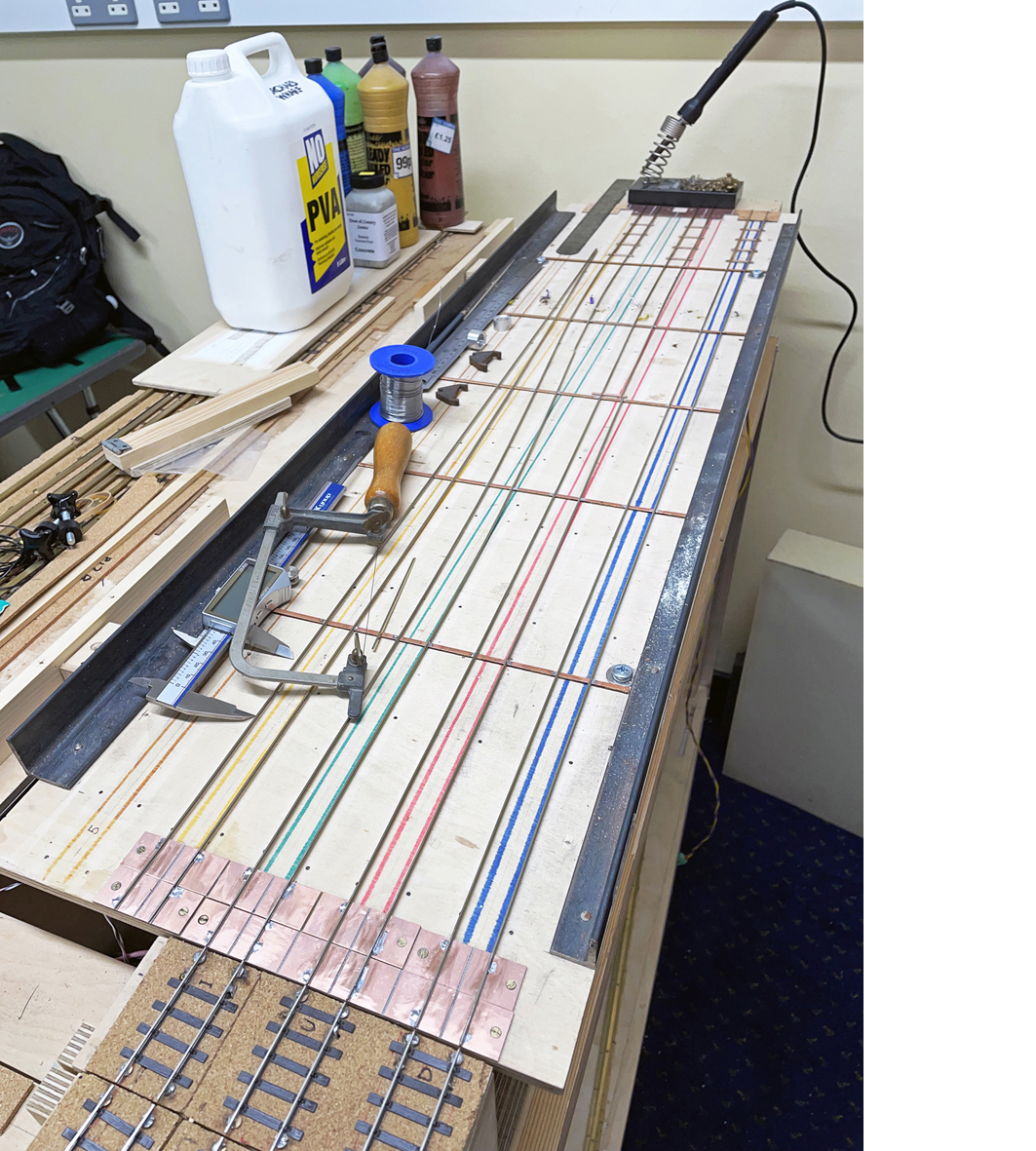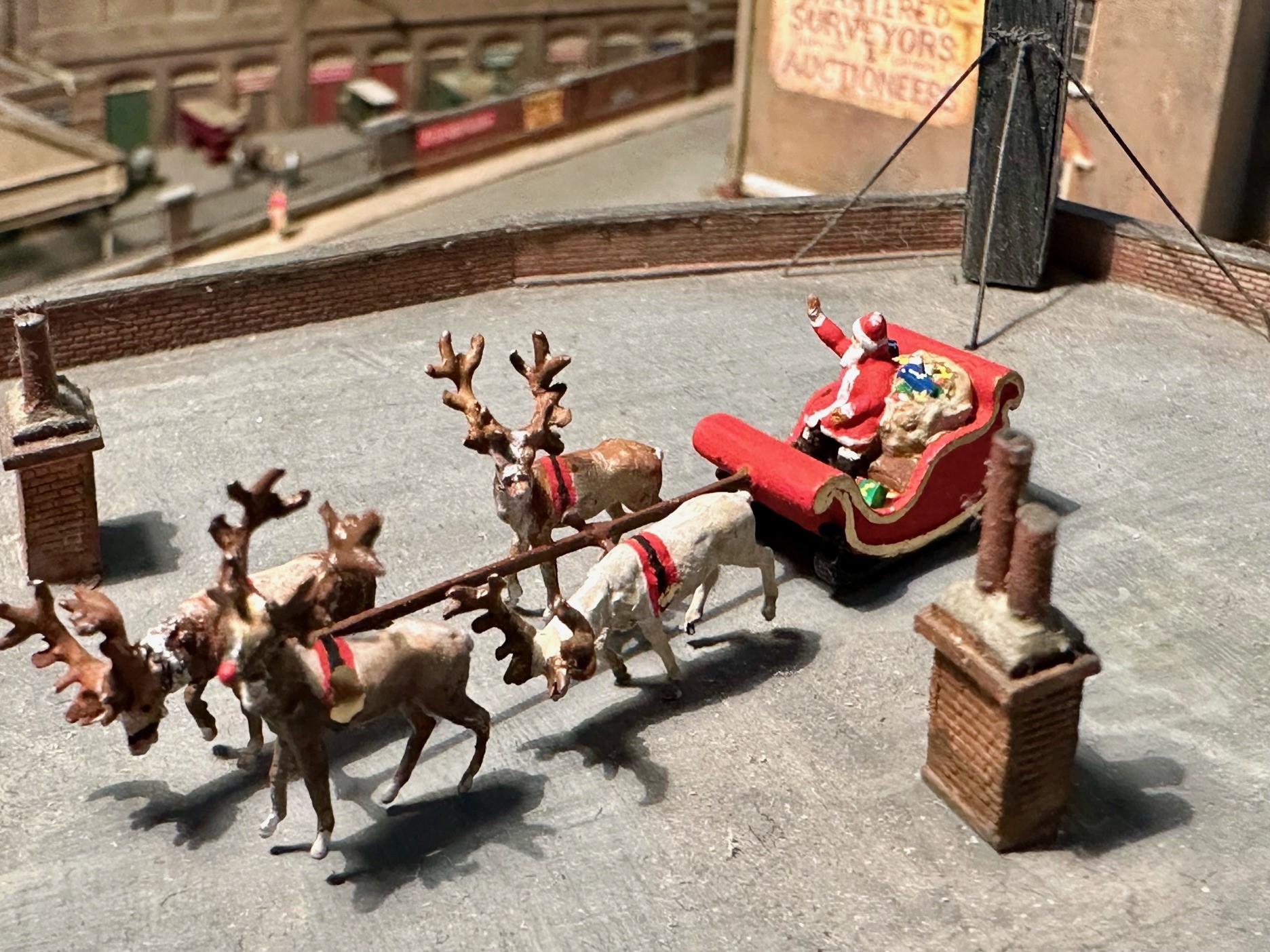A ‘London’ Class 26 in O gauge
David Coasby
1st May 2020
5 minutes

“Err, Dave, would you mind weathering a couple of diesels for me?” My mate Andy Ward from the Luton MRC was clutching two large blue boxes containing a Heljan Class 31 and in the other a Class 26. Being a Southern BR modeller it wasn’t that long ago I’d weathered my own Heljan Class 33, so I thought it would be a similar exercise. Both of Andy’s locos were destined to run on his Harpenden East layout (on the former Hatfield to Dunstable branch), so suitable running numbers were given to me for when I applied the Fox transfers. The Class 26 was to be D5315 which had been shedded at Hornsey when fairly new. It was at this point the ‘fun’ began. When I removed the loco from its generous packaging and examined it I noticed a large indentation at one end on both sides of the bodywork, just below the cab windows. Initially I didn’t take too much notice of this but then vaguely remembered the early members of the class didn’t have this and had their running numbers at both ends of the body – right where this indentation was.
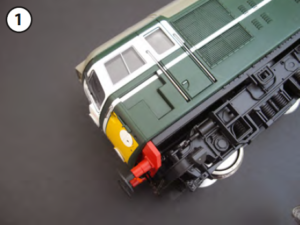
The model, as purchased.
Some investigation was needed and after a short while it transpired that Heljan had modelled the loco after they had been transferred to Scotland and had automatic tablet catchers fitted – hence the indentations. Strange really as I believe their 4mm scale model doesn’t have this (some of them do – Ed). They certainly weren’t running around between London and north Hertfordshire with these fitted, so I asked Andy what to do about it.
Not wishing to put a further burden on me he said “Just weather it and leave the indentations and yellow panel on the front as they are… no one will notice! Hmmm I thought… bet they do! There was no doubt, I just had to do something about it. Could I fit a piece of carefully shaped styrene into the recess? Although the indentations were quite a simple shape they were relatively deep with chamfered edges. Even if achieved a close fit I’d need to fill in any joins with Milliput. Then it hit me. How about filling the whole recess with Milliput? I’d never used it on such a large surface before but it was worth a go. First of all I scratched the paint surface to give a key to the Milliput (no going back now!) and thoroughly mixed enough of the two-part epoxy together to do just the first side.
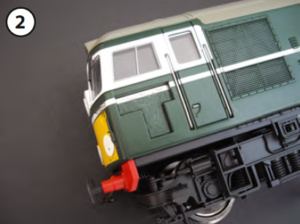
Scoring the plastic to give a key.
With a small screwdriver I forced the Milliput into the recess, gradually building up the depth and being careful not to go over the edges too much.
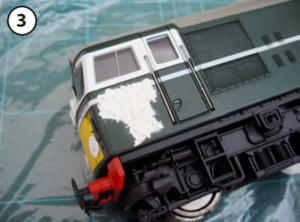
Milliput is applied.
I got it fairly level but it looked like a mini-ploughed field. I’d anticipated this and had to hand a saucer of water and small old wood chisel, which I dipped into the water and gradually worked the Milliput until it was smooth and level. You can (and should) take your time over this as Milliput doesn’t begin to harden for nearly an hour. I was very pleased with the initial work and set it aside to dry overnight.
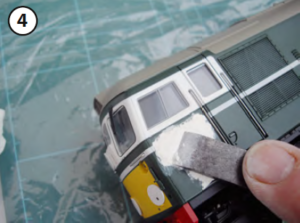
A little water is smoothed in with an old chisel.
I then got a tiny piece of very fine emery paper and gently rubbed the surface flatter, finishing off with some wet and dry paper in order to achieve the required smooth and flat finish.
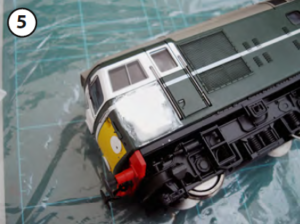
Smooth… but not smooth enough.
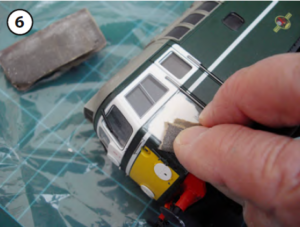
Rubbing down with some fine emery paper followed by some wet and dry paper.
Some masking tape was applied to cover any areas I didn’t want the paint to go onto and I loaded up my airbrush with some thinned down Railmatch BR Standard Loco Green, which proved to be a very good match to the paint used by Heljan.
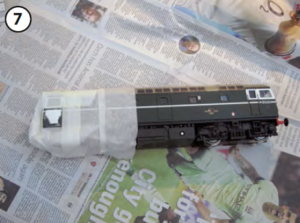
The area to be sprayed is masked off with masking tape.
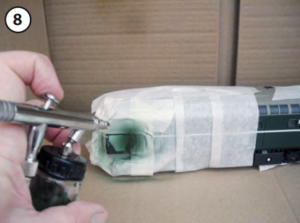
The airbrush contains some thinned down Railmatch BR Standard Loco Green, which was a very close match to Heljan’s paintwork.
Once this was fully dry the next slightly tricky job was extending the horizontal white line from where it left off on the cab door to the front edge of the cab, but still leaving a suitable gap for the running number. I used Humbrol Matt White. This isn’t a perfect match, but wouldn’t show the difference once I’d applied some weathering.
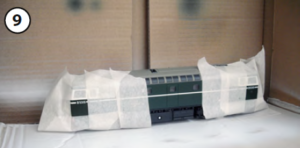
The horizontal white line has been painted in and Fox Transfers applied for the numbers. Note on early BR diesels the D had a serif. Masked up again and ready for a puff or two of matt varnish.
As I said previously, the yellow warning panels on the cab fronts were retained on the model. This of course isn’t correct, as these panels weren’t applied to the real locos until the early 1960s. But Andy had decided to pretend that a few of the Class 26s stayed in the south and never went to Scotland. So none of these locos had a tablet catcher fitted and like their Scottish cousins eventually
received yellow warning panels on their cab fronts (D5315 included). Maybe one day I’ll persuade Andy to let me spray some green over them! As supplied the model had 4 fully open white discs on each cab front. Fortunately Heljan supply some moulded half discs with the model, which I fixed over the lower ones and painted yellow.
Fox Transfers BR Diesel lettering was applied using warm water and a tiny drop of washing up liquid and then allowed to dry thoroughly. With masking tape in place I puffed a little matt varnish over the whole area I’d been working on and again set aside to dry. The final treatment was an application of weathering, using all the usual tried and tested methods. Andy was delighted with the result and both the 26 and 31 are now regular performers on his excellent Harpenden East layout.

The finished loco, once some weathering had been applied and not a trace of that tablet catcher.
Dave C
This article first appeared in Bulletin 495. An archive of recent Bulletins is available online in the members’ area of the website.
For details of membership, click here
Thursday Track Nights
We are open on Thursday evenings from 7pm to 9pm at our Keen House clubrooms. Visitors are welcome, please come along and introduce yourself.
Address:
Keen House, 4 Calshot Street, London, N1 9DA
Become a member
